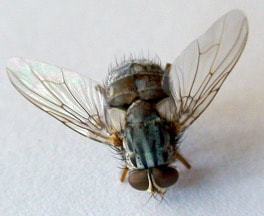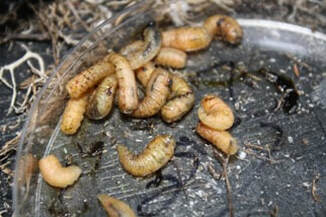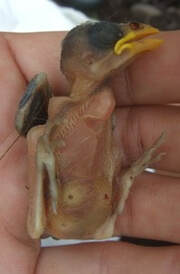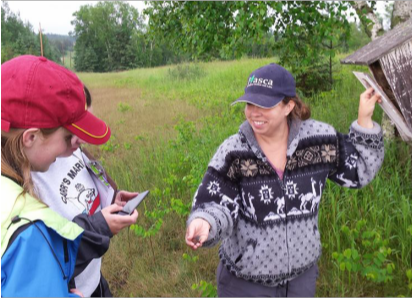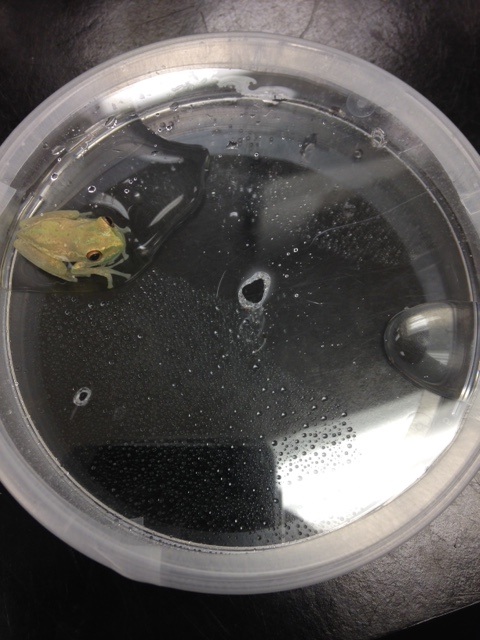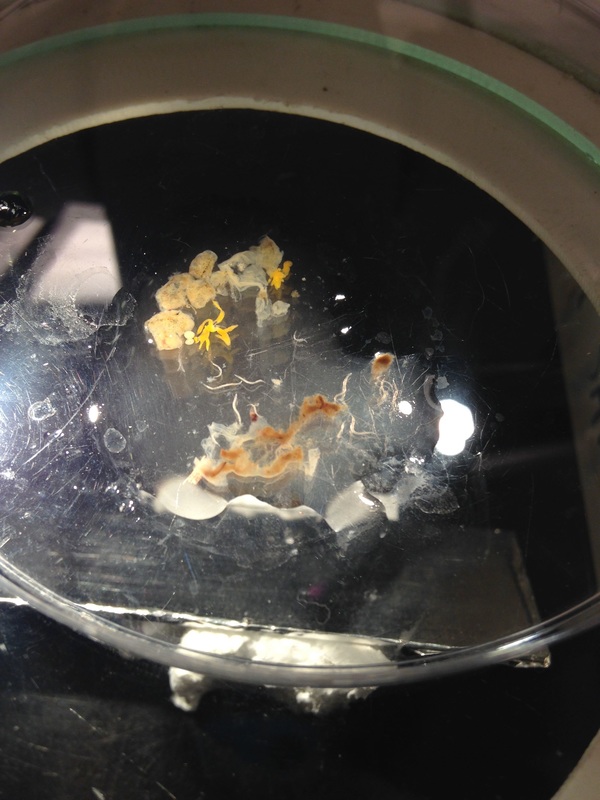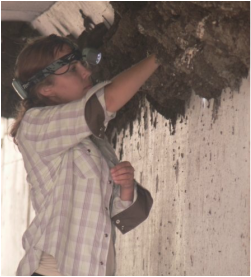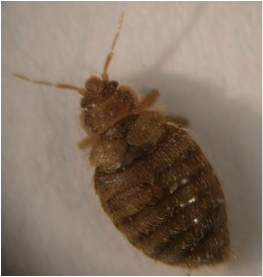Current Research in the Knutie Lab
Main topics: Conservation Biology, disease biology, ecotoxicology, host-microbe interactions, environmental change, immunology, animal behavior
Our work is funded by: National Science Foundation, National Geographic Study, Galapagos Conservancy
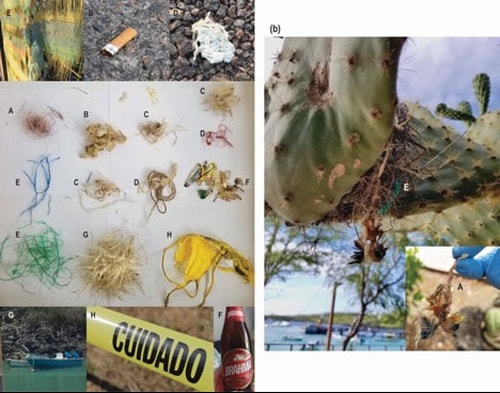 Urban trash in the Galapagos Island can be responsible for the death of Darwin's finches.
Urban trash in the Galapagos Island can be responsible for the death of Darwin's finches.
1) Effects of urbanization on the interactions between bird hosts and their invasive parasites in the Galapagos Islands
Over the past several decades, the Galapagos Islands have faced rapid urbanization, which has altered the natural habitat and allowed for the introduction of parasites, such as the parasitic nest fly Philornis downsi. This parasite negatively affects nestling survival of the endemic Darwin's finches and in some years, can cause up to 100% mortality. However, preliminary work shows that Darwin's finches are more resistant to P. downsi in urban areas and therefore less affected by the parasite than non-urban birds. These results suggest that urbanization is influencing the evolution or ecology of the host in a way that increases resistance to an emerging parasite. Past studies have shown that traits of organisms can differ in urban vs. non-urban environments. However, experimental studies have rarely been used to causally determine whether changes in traits in response to urbanization are driven by environmental conditions (non-heritable) or adaptive evolution (heritable). The goal of this work is to understand the mechanisms underlying resistance in Darwin's finches to an invasive parasite in response to urbanization. Additionally, we are interested in how human-related trash, including microplastics, affect Darwin's finches.
Selected relevant papers (Click on title):
- Urban living influences the nesting success of Darwin's finches in the Galapagos Islands
- Effect of introduced parasites on the survival and microbiota of nestling cactus finches (Geospiza scandens)
- Human activity can influence the gut microbiota of Darwin’s finches in the Galapagos Islands
- Relationships among introduced parasites, host defenses, and gut microbiota of Galápagos birds
- Galapagos mockingbirds tolerate introduced parasites that affect Darwin’s finches
- Darwin's finches combat introduced nest parasites with fumigated cotton
Interested in donating to help with our conservation efforts in the Galapagos?
All donations are tax deductible through the UConn Foundation (501(c)(3)) and all funds are applied directly to Galapagos work. For more information, please contact me at: [email protected]
Over the past several decades, the Galapagos Islands have faced rapid urbanization, which has altered the natural habitat and allowed for the introduction of parasites, such as the parasitic nest fly Philornis downsi. This parasite negatively affects nestling survival of the endemic Darwin's finches and in some years, can cause up to 100% mortality. However, preliminary work shows that Darwin's finches are more resistant to P. downsi in urban areas and therefore less affected by the parasite than non-urban birds. These results suggest that urbanization is influencing the evolution or ecology of the host in a way that increases resistance to an emerging parasite. Past studies have shown that traits of organisms can differ in urban vs. non-urban environments. However, experimental studies have rarely been used to causally determine whether changes in traits in response to urbanization are driven by environmental conditions (non-heritable) or adaptive evolution (heritable). The goal of this work is to understand the mechanisms underlying resistance in Darwin's finches to an invasive parasite in response to urbanization. Additionally, we are interested in how human-related trash, including microplastics, affect Darwin's finches.
Selected relevant papers (Click on title):
- Urban living influences the nesting success of Darwin's finches in the Galapagos Islands
- Effect of introduced parasites on the survival and microbiota of nestling cactus finches (Geospiza scandens)
- Human activity can influence the gut microbiota of Darwin’s finches in the Galapagos Islands
- Relationships among introduced parasites, host defenses, and gut microbiota of Galápagos birds
- Galapagos mockingbirds tolerate introduced parasites that affect Darwin’s finches
- Darwin's finches combat introduced nest parasites with fumigated cotton
Interested in donating to help with our conservation efforts in the Galapagos?
All donations are tax deductible through the UConn Foundation (501(c)(3)) and all funds are applied directly to Galapagos work. For more information, please contact me at: [email protected]
|
2) Effects of local ecology on the evolution of avian nest parasites
The goal of this work is to determine how local ecology, including during winter, affects adaptation, virulence, and macroevolutionary patterns of the avian nest parasite community. We are using a long-term study site at Itasca Biological Station and experimental evolution to determine whether overwintering temperature affects the survival, reproductive success, and virulence of parasitic nest fly that infest eastern bluebirds over multiple generations. We are also using a Nest Parasite Community Science project to study the entire nest parasite community with the public community (nest box “landlords”). Specifically, we are using common garden experiments and observational data to determine what ecological factors affect the prevalence, local adaptation, and abundance of nest parasite communities across the range of their eastern bluebird and tree swallow hosts. |
Selected relevant papers (Click on title):
- Understanding spatiotemporal effects of food supplementation on host-parasite interactions use community-based science
- Host tolerance and resistance to parasitic nest flies differ across two bird species
- Food supplementation affects gut microbiota and immunological resistance to parasites in a wild bird species
- Avoidance, tolerance, and resistance to ectoparasites in nestling and adult tree swallows
- Understanding spatiotemporal effects of food supplementation on host-parasite interactions use community-based science
- Host tolerance and resistance to parasitic nest flies differ across two bird species
- Food supplementation affects gut microbiota and immunological resistance to parasites in a wild bird species
- Avoidance, tolerance, and resistance to ectoparasites in nestling and adult tree swallows
|
3) Effects of host-associated microbiota on life history strategies and disease risk in frogs
We are currently exploring whether an early-life disruption in the frog-associated gut microbiota affects later-life disease risk. We are also exploring whether the host-associated microbiota mediates the effect of environmental factors (e.g. pollution, diet, climate) on immune system development and later-life disease risk. (Funded by the British Ecological Society) |
Selected relevant papers (Click on title):
- Do host-associated gut microbiota mediate the effect of an herbicide on disease risk?
- Early-life diet affects host microbiota and later-life defenses against parasites in frogs
- Early-life disruption of amphibian microbiota decreases later-life resistance to parasites
- Host tolerance and resistance of parasitic gut worms depend on resource availability
- Do host-associated gut microbiota mediate the effect of an herbicide on disease risk?
- Early-life diet affects host microbiota and later-life defenses against parasites in frogs
- Early-life disruption of amphibian microbiota decreases later-life resistance to parasites
- Host tolerance and resistance of parasitic gut worms depend on resource availability
Past Research
|
What factors drive changes in host tolerance of parasitism over time? In collaboration with Dr. Charles Brown (University of Tulsa), we are interested in the ecology and evolution of host tolerance against parasites using his >30-year data set on cliff swallows and swallow bugs. (Funded by NSF) |
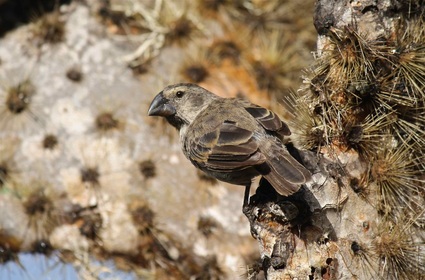
Effects of an introduced parasite on endemic birds
in the Galapagos
The focus of my dissertation is to understand the effects of an introduced parasitic nest fly Philornis downsi on different hosts in the Galapagos Islands. I am particularly interested in how different hosts defend themselves against P. downsi and the consequences of these defenses on host fitness.
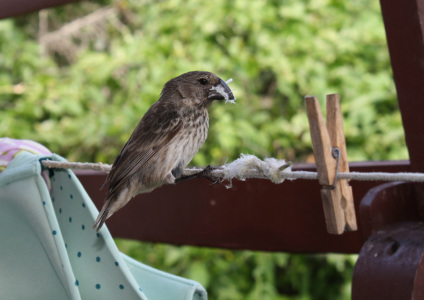
Conservation of Darwin's finches
One of my most rewarding projects involves applied conservation of Darwin’s finches in the Galapagos. The recent introduction of a parasitic nest fly Philornis downsi to the Galapagos Islands has had devastating effects on nestling survival of Darwin’s finches. Thus, controlling the fly is currently a top priority for the Galapagos National Park. I have been testing novel method of controlling P. downsi that allows birds to self-fumigate their own nests. This work potentially has major implication for the conservation of highly endangered finches that are parasitized by P. downsi.
One of my most rewarding projects involves applied conservation of Darwin’s finches in the Galapagos. The recent introduction of a parasitic nest fly Philornis downsi to the Galapagos Islands has had devastating effects on nestling survival of Darwin’s finches. Thus, controlling the fly is currently a top priority for the Galapagos National Park. I have been testing novel method of controlling P. downsi that allows birds to self-fumigate their own nests. This work potentially has major implication for the conservation of highly endangered finches that are parasitized by P. downsi.
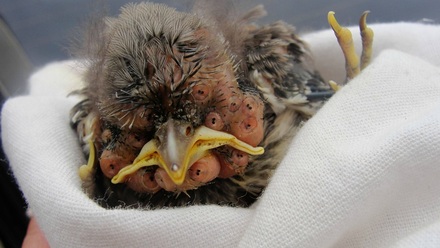 Tropical mockingbird with subcutaneous parasites. [Photo credit: J. Herman]
Tropical mockingbird with subcutaneous parasites. [Photo credit: J. Herman]
Effects of native nest flies on bird hosts in Tobago
Hosts that have long-standing relationships with their parasites have probably evolved defense mechanisms to deal with the parasites. I'm interested in the effects of native Philornis nest flies on black-faced grassquits and tropical mockingbirds in Tobago. Both species are phylogenetically related and similar ecologically to their congeners in the Galapagos (i.e. Darwin’s finches and Galapagos mockingbirds). These systems present the opportunity to compare tolerance and resistance defense mechanisms within novel and long-standing host-parasite relationships.
Hosts that have long-standing relationships with their parasites have probably evolved defense mechanisms to deal with the parasites. I'm interested in the effects of native Philornis nest flies on black-faced grassquits and tropical mockingbirds in Tobago. Both species are phylogenetically related and similar ecologically to their congeners in the Galapagos (i.e. Darwin’s finches and Galapagos mockingbirds). These systems present the opportunity to compare tolerance and resistance defense mechanisms within novel and long-standing host-parasite relationships.
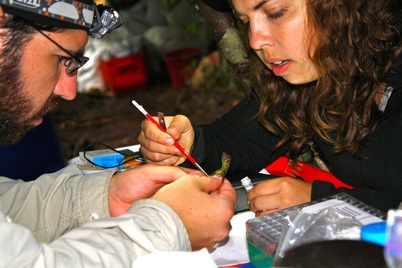
Philippines Biodiversity Survey
In the summer of 2010, I joined a collaborative project between the University of Utah and the University of Kansas to survey vertebrates and their parasites in the Philippines. We focused on several locations throughout the island of Luzon. One of the objectives of this multi-year project is to understand how the loss of biodiversity of vertebrate hosts may reflect on their parasites.
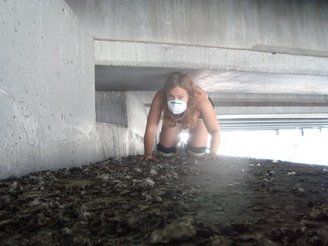
Malaria and Rock Pigeons
Avian malaria is often found at lower infection intensities in older birds than younger birds. One explanation of this pattern is that younger birds are removed from the population before reaching adulthood, thus removing the highest infection intensities from the population. We tested this hypothesis by experimentally manipulating parasite intensity of Haemoproteus columbae, a malaria parasite, and examining the impact of the parasite on the development and survival of free-living nestling and fledgling rock pigeons (Columba livia). The field component is a piece of a larger project investigating host-parasite interactions, through laboratory experiments, between rock pigeons, a hippoboscid fly (Pseudolynchia canariensis), and Haemoproteus columbae by fellow graduate student, Jessi Waite. This work was published in Evolutionary Ecology.
Avian malaria is often found at lower infection intensities in older birds than younger birds. One explanation of this pattern is that younger birds are removed from the population before reaching adulthood, thus removing the highest infection intensities from the population. We tested this hypothesis by experimentally manipulating parasite intensity of Haemoproteus columbae, a malaria parasite, and examining the impact of the parasite on the development and survival of free-living nestling and fledgling rock pigeons (Columba livia). The field component is a piece of a larger project investigating host-parasite interactions, through laboratory experiments, between rock pigeons, a hippoboscid fly (Pseudolynchia canariensis), and Haemoproteus columbae by fellow graduate student, Jessi Waite. This work was published in Evolutionary Ecology.
